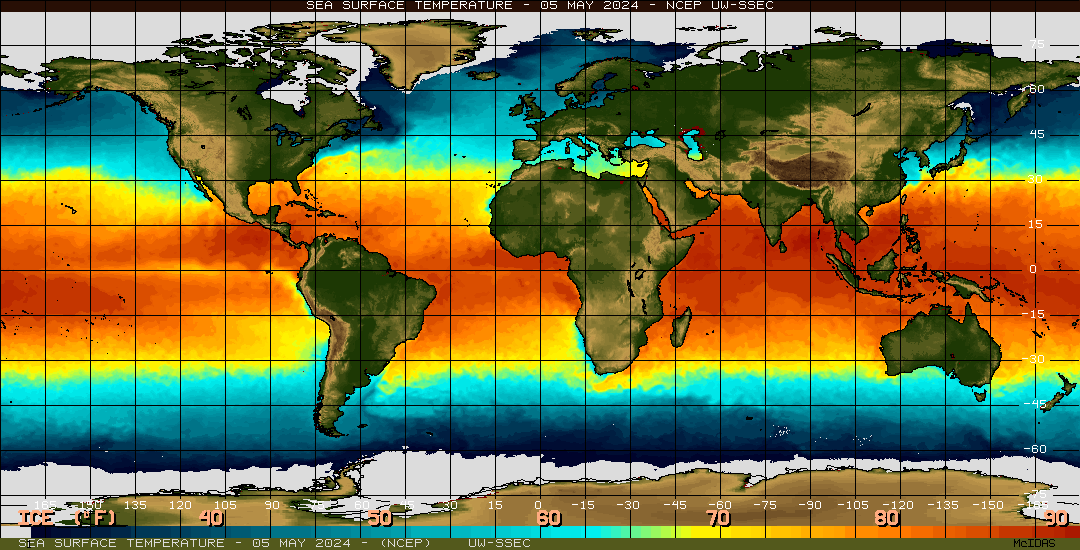
A parched California may be getting some much needed relief this coming winter. Scientists and climate experts are now certain that an El Niño rivaling that of the infamous 1997-98 El Niño should arrive in just over a month. For most of us here on the West Coast of the USA we think of El Niño as just a surge in the amount of rain that falls throughout the winter months since that is the only effect we tend to notice. However, an El Niño is actually defined by the changing of normal wind and ocean currents in the Pacific which results in a major warming of Pacific waters and significant weather patterns on a global scale.
We are already beginning to feel the effects of this years El Niño. Over the past few weeks, the waters along the coast of Southern California have warmed significantly, drawing in a flurry of creatures rarely seen outside of what would be considered tropical waters. Santa Barbara has had several hammerhead shark sightings in the past few days alone. One fisherman reeled in two seven foot hammerheads while a kayaker fought off an aggressive specimen with his paddle. The sharks, who normally hang out miles past the Channel Islands, have been drawn to offshore waters by a large increase in yellowtail tuna, a fish that only lives in warmer parts of the Pacific. Along with these larger animals have come smaller creatures who underwent an impressive journey to arrive on our shores. Thousands of crabs from the lower sections of Baja, Mexico showed up in our kelp beds last month. These tiny, red crustaceans are enjoying Southern California being turned into a temporary tropical paradise.
While surfers and sharks may be loving the tropical feel that El Niño has brought, many parts of the world are bracing for the worst. An El Niño event essentially flips the weather of the world on its head. The normally moderate regions of South-East Asia, Central & South America, and the South Pacific experience months of dry heat waves and droughts. The warmer water changes ecosystems, as evident by our new oceanic friends hanging about in our waters. The heat can lead to very low crop yield in turn resulting in regional and global food shortages along with a rise in food prices. The fishing industry becomes threatened as well as much of the potential harvest swims off to better waters. Meanwhile, North America, Europe, and Northern Asia experience a drop in temperatures and an increase in precipitation. Africa often falls under both ends of the weather spectrum, with floods and droughts causing outbreaks of diseases. All of these weather events plagued the world during the 1997 mega El Niño and with them came civil conflict, a slowing of the global economy, and often the loss of human life. This year, the National Oceanic and Atmospheric Administration is telling us a more impressive El Niño is coming. Luckily, we have learned from the past.
Over the next few weeks it is imperative that governments begin monitoring the regions that will be hit hardest by El Niño. The cost of moving food around on a global scale has dropped significantly over the past few years and with Northern Hemisphere countries likely about to experience a high yield agricultural season, governments and international organizations should be prepared to act in the event of impending famines. Financial aid and a loosening of any restrictions should also be considered as many poorer countries may need short term capital lending to rebuild damaged infrastructure and help subsidize any industries affected by the weather. With the accuracy of predictions and our ability to monitor these events increasing, along with the now instantaneous speed of information delivery, the world must be ready to react to any challenges this year could see. The global community has the ability to avoid a repeat of 1997.
California and other western states are not exempt from the need to prepare. Massive amounts of rain and snow are welcomed and needed, but with them will most likely come heavy flooding and mudslides. The West’s damaging four year drought has extended the fire season and many states have been battling massive wildfires since the beginning of the summer. Damage from these fires is predicted to be in the billions. These blazes have only exacerbated the threat of mudslides as thousands of acres of vegetation that once held the soil in place has been burned away. Our waterways have not seen significant rain in years and many of them are in bad shape, unable to handle too much at once. Flooding is almost a certainty. The last time the Los Angeles area saw about 1/2 an inch of rain, homeowners in hilly areas were plagued by muddy flood water. A crumbling infrastructure may also be threatened as the flooding could damage roads and bridges. Just recently a bridge along the I-10 in SoCal was washed away after the region experienced unusual flash flooding.
While all of this is concerning, it is nothing we can’t handle here in California. Preparation and planning is key. And we must not forget the positive effects El Niño will have on the region. Relief will finally be brought to our reservoirs turned puddles and almond growers may finally be able to grow without guilt looming over their head. It may not pull us completely out of the drought, but it will sure help. It will also bring the best skiing anyone has seen for a long time!